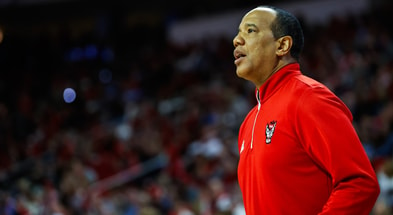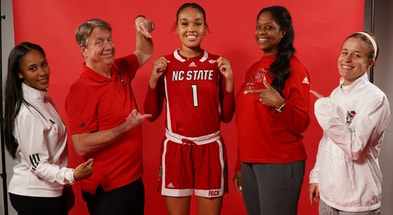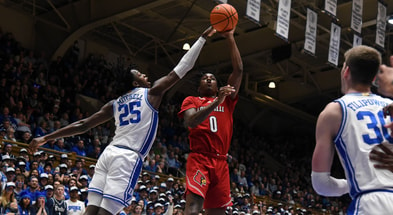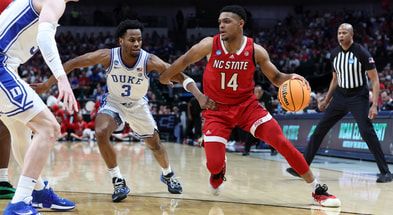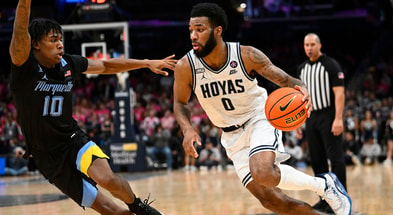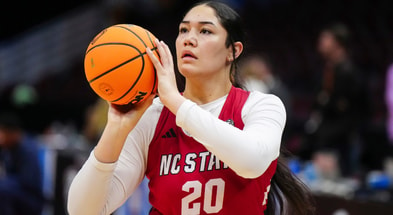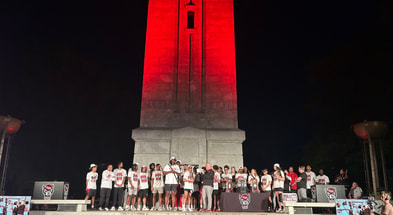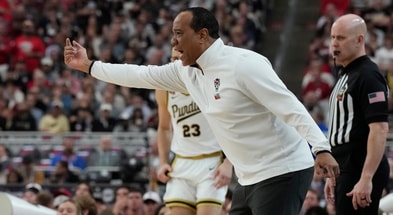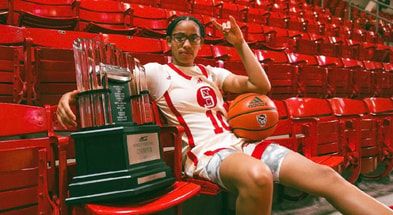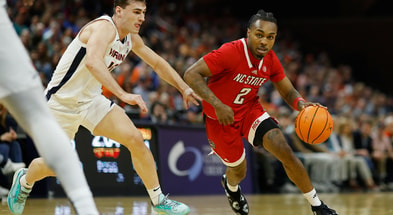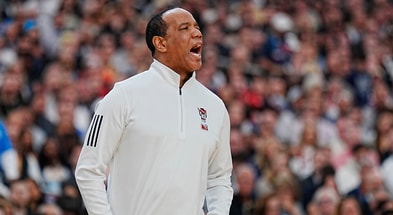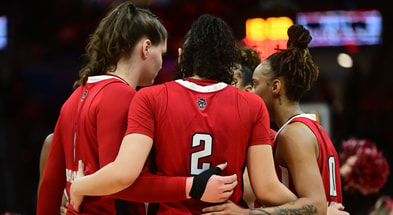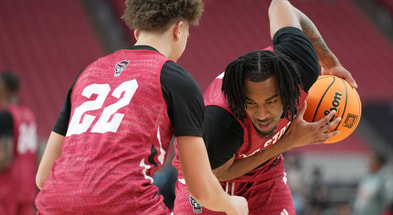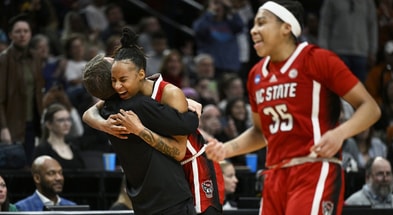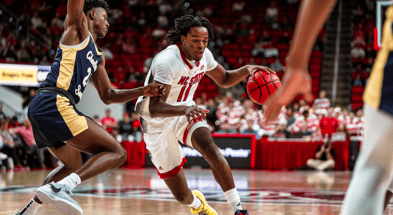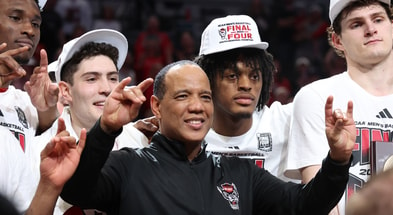Bridgeport highlighted needed changes for women's basketball
With about three minutes to play in Monday night’s NC State women’s basketball game vs. Connecticut in the NCAA Tournament Elite Eight battle for the Bridgeport (Conn.) Regional, a longtime friend and ACC author texted the following: “This UConn-State game is the women’s version of 1974 UCLA-NC State men’s game.”
Over the course of the next 50 minutes, the Wolfpack and Huskies went into overdrive and two overtimes in one of the best women’s tournament games ever played, making that comment even more prescient.
It is inarguable that the 1973-74 season, and the national semifinals and finals played in Greensboro that year, had the biggest impact on the growth and development of the men’s tournament, when David Thompson and the Wolfpack dethroned UCLA’s dynasty after seven consecutive championships. Maybe this year’s tournament will have the same impact on the women’s game.
Let’s start with a couple of absolutes before going into too much depth on that.
In many ways, the women’s game has always struggled when it comes to comparisons with the more established men’s game because too many people want the women’s game to be the same as the men’s. That, however, is always the fallacy: The two tournaments are two vastly different versions of the same game.
Broadly, the men’s bracket is full of power players, racing down the court, dunking and pushing each other around under the basket.
The women’s bracket has always been a purer version of the sport, with excellent shooting, selfless passing and less contact on every possession.
There are obvious exceptions every year, but the fact remains that the women’s tournament doesn’t have to mimic the men’s tournament to be exciting, just as college football doesn’t have to emulate the NFL and the College World Series doesn’t have to be the same as the major league playoffs.
In just about every instance, those events are better off when they aren’t mirror images of each other.
The men’s basketball tournament has twice needed important resets in its growth into America’s biggest and most popular sporting event after the NFL’s Super Bowl. The first was in 1950, after NC State coach Everett Case took his squad into the eight-team tournament by earning a controversial bid over Adolph Rupp’s defending national champion Kentucky back when college basketball was divided into regional districts that relied on individual committees to select participants.
The next year, the tournament expanded to 16 teams. Two years later, it jumped to 22 and in 1969 to 25 conference champions. Freshman eligibility was restored for the 1972-73 season, infusing the tournament with more players to watch.
The 1973-74 season was a game-changer for college athletics in general and college basketball in particular. With the passage of Title IX in 1972, schools were given six years to get women’s athletics going. That didn’t really start until 1973 and many schools, especially those with strong football traditions, dragged their feet to implement equitable programs for women.
In basketball, NC State athletics director Willis Casey took the place of UCLA athletics director J.D. Morgan on the influential NCAA Basketball Committee, and shortly afterwards, the organization signed its first national television deal, reinstituted the dunk and expanded the tournament to a total of 32 teams, including multiple teams per conference. (Morgan, and by extension Bruins head coach John Wooden, had always been against tournament growth and expansion, as most monopoly holders are.)
Those changes alone are credited with the exponential growth of the game over the next decade.
The tournament expanded to 40 in 1979, to 52 in 1983, 53 in 1984, 64 in 1985, 65 in 2001 and 68 in 2011.
To be clear, the women’s tournament, which expanded from 64 to 68 teams this year, doesn’t need more teams. It does, however, need more competitive balance.

The men’s game stagnated in the late 1960s because UCLA’s dynasty was unbroken. Connecticut’s dominance in the women’s game over the last 20 years and Tennessee in the two decades before have had a similar impact.
There is no doubt that head coach Geno Auriemma’s team was given a favorable placement that it didn’t necessarily deserve. And while it was unconscionable that the second-seeded Huskies were given an ostensible home game in Bridgeport against the top-seeded Wolfpack, the attempted word-salad explanation of it was even worse.
So while the NC State men never had to leave the state of North Carolina in its NCAA title run in 1974, they were at least the No. 1 team in the country (there was no seeding of teams until 1979), earning the right to play in Reynolds Coliseum and the Greensboro Coliseum with a 26-1 record going into the tournament. Also, the fact that the Final Four was in Greensboro was truly a fortunate coincidence, much like the past two Super Bowls being played at the home venues of the victorious NFL champs.
In this year’s women’s tournament, Connecticut was intentionally placed in Bridgeport, as it had been four previous times, because its fan base sold plenty of tickets for the Sweet 16 and Elite Eight games played there before. Connecticut owns an 14-1 record in NCAA games played at Bridgeport, including four regional championship game victories to advance to the Final Four in its streak of 14 consecutive appearances in championship weekend.
Next year, the women’s tournament will break from the tradition established by the men, reducing its regional sites to two centralized locations for eight teams each. When that decision was made in 2019, the NCAA Women’s Basketball Committee said the two neutral site regionals would “elevate and enhance the student-athlete experience and create opportunity for growth of the sport and championship through increased focus on developing two regional markets annually.”
That change, of course, is a year too late for Wolfpack coach Wes Moore and his program, which revolved around graduate students Raina Perez, Kai Crutchfield and Kayla Jones and senior All-America Elissa Cunane. It was a team built to succeed this year on college basketball’s biggest stage.
It’s a shame that the NCAA’s tradition of regionalism needlessly prevented that from happening for perhaps the best team in school history.
At least there are changes afoot that will benefit future generations and grow the women’s basketball game, however differently from the men, as it did following the Wolfpack’s first team championship in 1974.
Tim Peeler is a regular contributor to The Wolfpacker and can be reached at [email protected].
——
Talk about NC State women’s basketball inside The State of Basketball
Subscribe to our YouTube channel
Learn more about our print and digital publication, The Wolfpacker
Follow us on Twitter: @TheWolfpacker
Like us on Facebook
